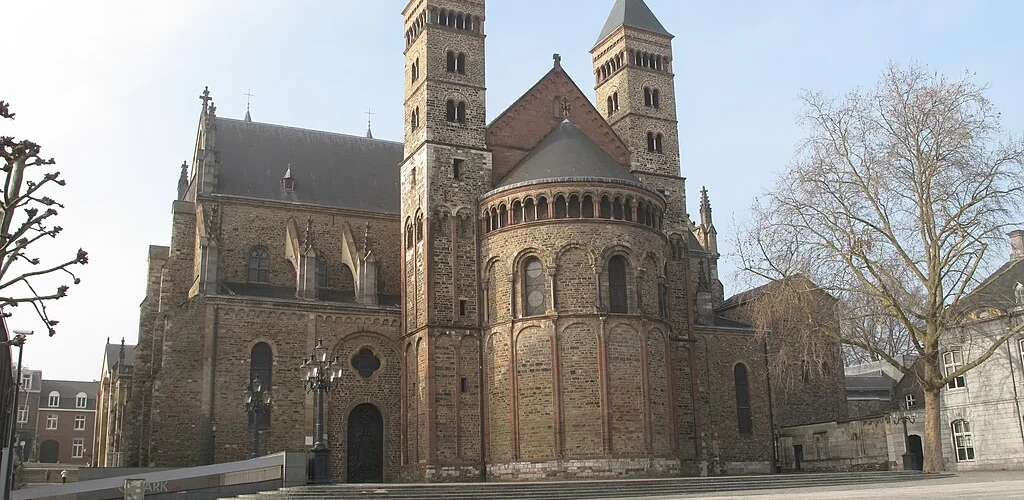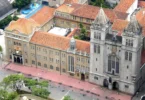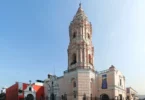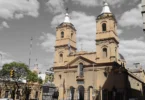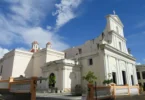Introduction
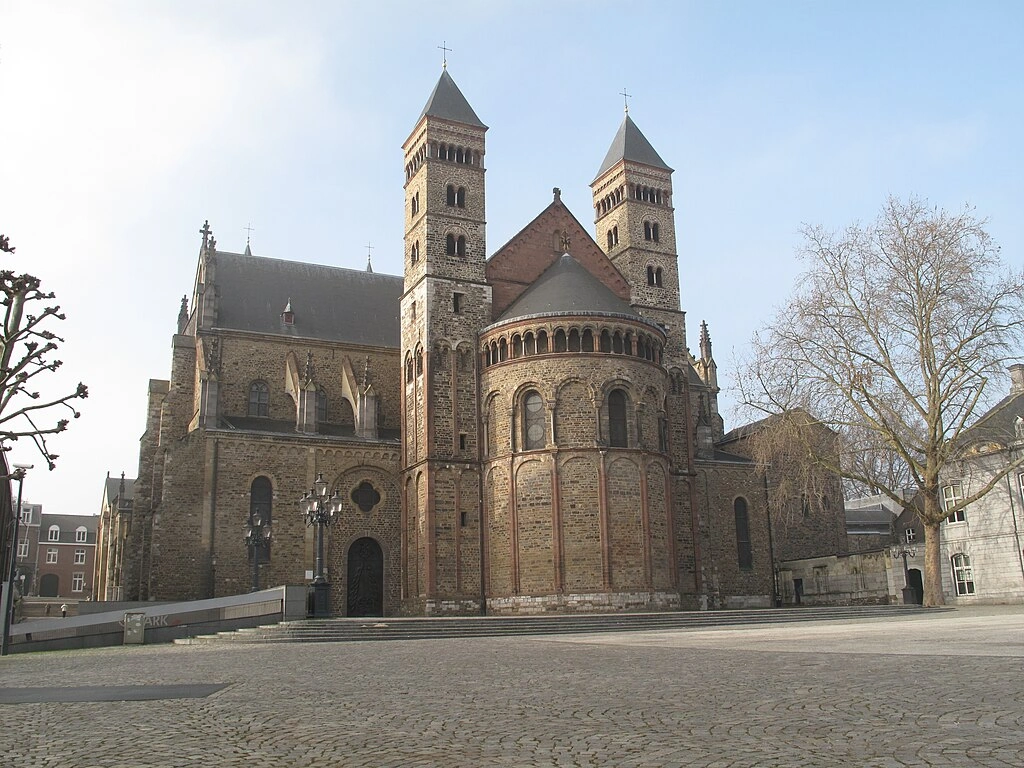
The Basilica of Saint Servatius (Dutch: Sint-Servaasbasiliek) is a renowned Roman Catholic church located in the heart of Maastricht, a historic city in the southern Netherlands. This significant religious structure, dedicated to Saint Servatius, one of the earliest bishops of Maastricht and a key figure in the region’s Christian heritage, stands as a remarkable example of architectural evolution. While primarily designed in the Romanesque style, the basilica is a hybrid of various architectural influences, reflecting the long history of construction and renovation that has shaped its current form. Strategically positioned next to the Gothic Church of Saint John, the Basilica of Saint Servatius enjoys a prominent location in Maastricht, adjacent to the bustling Vrijthof square, one of the city’s most iconic landmarks. The basilica’s intricate design and historical significance make it not only a place of worship but also a testament to the architectural and cultural legacy of Maastricht. Visitors and pilgrims alike are drawn to its stunning architecture, rich history, and the importance it holds as a center of religious devotion in the region.
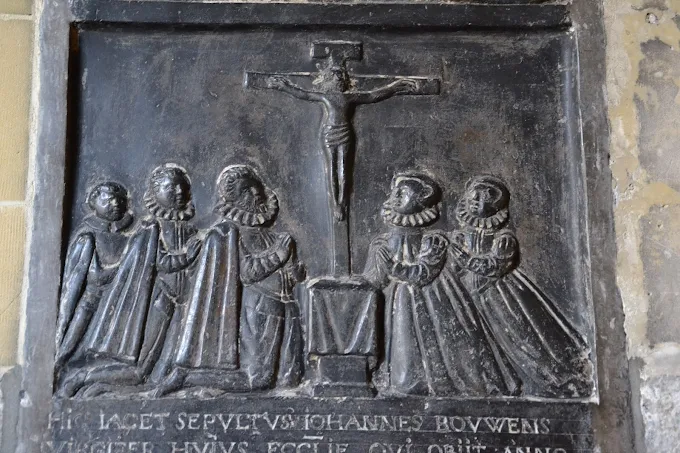
Early Foundations and the First Church
The Basilica of Saint Servatius stands on the site traditionally believed to be the grave of Saint Servatius, an Armenian missionary who became the bishop of Tongeren and passed away in Maastricht around the year 384. This sacred site has long been a destination for pilgrims and was initially marked by a small memorial chapel dedicated to Saint Servatius. The first significant church on this site was built around 570 by Bishop Monulph. This early structure, constructed of stone, was intended to accommodate the growing number of pilgrims visiting the grave of Saint Servatius. However, this church was eventually replaced in the late 7th century by a larger pilgrim church, reflecting the increasing religious significance of the site.
Construction of the Romanesque Church
The current structure of the Basilica, however, was built over several stages spanning more than a century. The first major phase of construction occurred in the first half of the 11th century, with the establishment of the nave. This was followed by the construction of the transept in the latter part of the 11th century, and the completion of the choir and westwork in the 12th century. The church was built in the Romanesque style, during a period when the Chapter of Saint Servatius maintained close relations with the Holy Roman Emperors. This connection is reflected in the church’s design, which exhibits characteristics of a German imperial church.
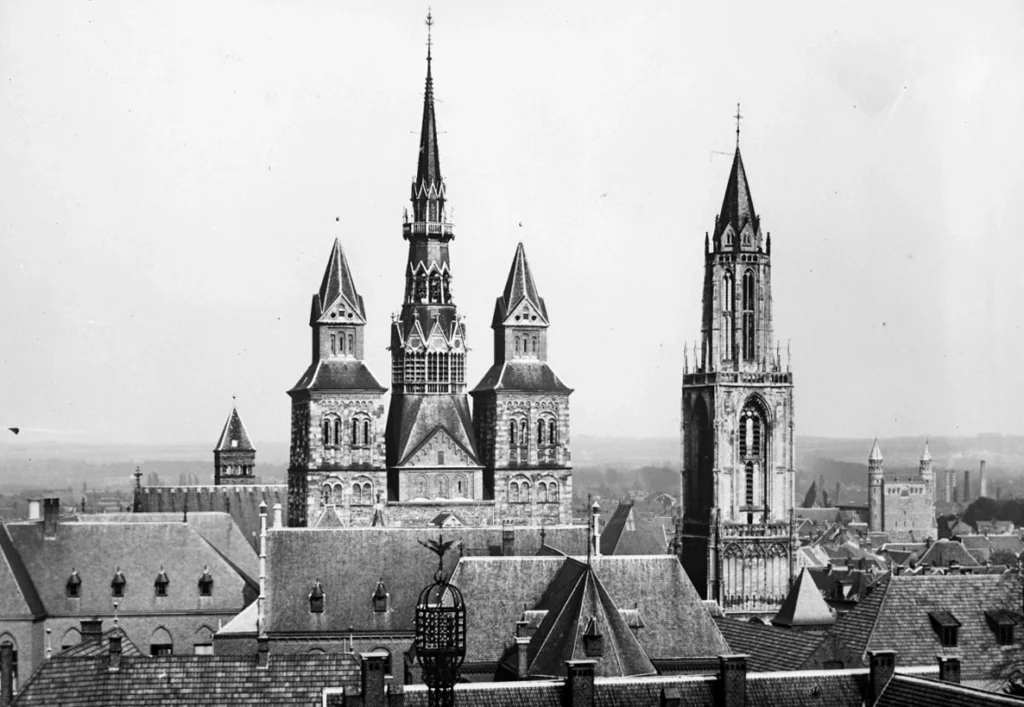
The dedication of the church took place in 1039 and was attended by Emperor Henry III and twelve bishops. The church’s importance was further underscored by the fact that many of its Medieval provosts were scions of the most prominent German noble families. Several of these provosts went on to hold prestigious positions, such as serving as chancellors of the Holy Roman Empire, and at least eight became archbishops.
Architectural Evolution and Modifications
The architectural development of the basilica continued throughout the centuries. Around 1180, the sculpted Bergportaal, located at the south side of the church, was begun. This portal can be classified as late Romanesque or early Gothic in style. In addition, the chapels along the side aisles, constructed during the 14th and 15th centuries, reflect the Gothic style. The vaulted ceilings of the nave and transept, which also date from this period, add further Gothic influence to the church’s design. In 1556, a late Gothic spire was added to the westwork, positioned between the two existing towers. A century later, in 1770, the entire westwork was crowned with Baroque helmet spires, designed by the Liège architect Etienne Fayen, which further transformed the church’s appearance.
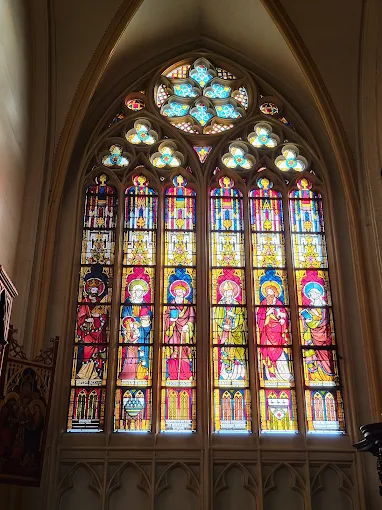
Interior Changes and the French Revolution
Over time, the interior of the church underwent significant alterations. In the 17th century, the Gothic choir rood screen, which had been adorned with sculpted depictions of Saint Servatius’ life, was dismantled. During restoration work in the 1980s, fragments of this 14th-century screen were discovered and are now preserved in the church’s lapidarium in the East crypt. By the end of the 18th century, the church had been repainted entirely in white, and its once-vibrant Medieval stained glass windows were replaced with clear glass, giving the interior a more Baroque appearance. This transformation was part of a broader trend of Baroque influence sweeping through Catholic churches at the time.
The Impact of the French Revolution
The arrival of French revolutionary forces in 1797 had a profound impact on the basilica. The chapter was dissolved, and the church was repurposed as a horse stable by the occupying troops. During this period, the church’s furnishings were either sold, stolen, or destroyed, and many of its treasures disappeared. In 1804, the church was returned to the parish, but it had been severely damaged. Much of the damage occurred in the aftermath of the revolution, with some sections of the church deemed irreparable. The 11th-century Chapel of Saint Maternus and the 15th-century Koningskapel, built by French kings Charles VII and Louis XI, were demolished. For liturgical reasons, the elevated choir was lowered, and the underlying 11th-century crypt was destroyed in the process. In 1846, the four panels of the reliquary chest of Saint Servatius (Noodkist) were sold to an antiques dealer and eventually found their way to the Royal Museums of Art and History in Brussels.
Restoration Efforts in the 19th and 20th Centuries
Between 1866 and 1900, the basilica underwent major restorations, led by the famous Dutch architect Pierre Cuypers. This restoration aimed to reverse some of the damage inflicted during the French occupation and earlier alterations. However, in 1955, a fire caused by lightning brought down Cuypers’ Gothic Revival westwork spire, leading to another round of restoration work in the 1980s and early 1990s. During this more recent restoration, much of Cuypers’ colorful interior decoration was removed, and extensive excavations were conducted in the church and surrounding areas. These excavations provided valuable insights into the history of the church and its predecessors, revealing a wealth of information about the site’s religious and architectural evolution.
Legacy and Continued Significance
Today, the Basilica of Saint Servatius remains a symbol of Maastricht’s rich religious history and architectural heritage. Despite the many changes it has undergone over the centuries, the church stands as a testament to the enduring significance of Saint Servatius and his legacy in the region. The basilica continues to draw visitors, both for its historical importance and its role as a place of worship and pilgrimage.
Religious Significance of the Basilica of Saint Servatius
Pilgrimage and the Presence of Relics
The Basilica of Saint Servatius holds immense religious significance, primarily due to the presence of the grave of Saint Servatius, one of the most revered figures in early Christian history in the region. His tomb, located in the church’s crypt, has been a focal point for pilgrims for centuries. Alongside the grave, the church also houses numerous relics, which further enhance its spiritual importance and attract large numbers of visitors. The tradition of pilgrimage to the Basilica has deep historical roots. Beginning in the 14th century, though possibly even earlier, a seven-yearly pilgrimage was established in collaboration with Aachen Cathedral and Kornelimünster Abbey. This event, known as the Pilgrimage of the Relics (Dutch: Heiligdomsvaart), became one of the most significant religious gatherings in the region, drawing tens of thousands of pilgrims who sought the blessings of Saint Servatius and the relics housed within the basilica. The pilgrimage became a central feature of the religious life in Maastricht and surrounding areas.
However, in 1632, following the capture of Maastricht and the city’s affiliation with the Dutch Republic, the Pilgrimage of the Relics was temporarily halted. The political and religious shifts of the time had a profound impact on the practice, but the tradition was revived in the 19th century, reflecting the continued devotion to Saint Servatius and the significance of his relics. The pilgrimage remains an important event in the Catholic calendar, with the most recent iteration taking place from May 24 to June 3, 2018. This revival of the Pilgrimage of the Relics underscores the enduring spiritual draw of the basilica and its role in the wider religious community.
The Basilica’s Role in the Diocese of Roermond
Today, the Basilica of Saint Servatius remains a central hub of Catholicism in Maastricht. It serves as the main church of the Deanery of Maastricht, which is part of the Diocese of Roermond. As such, it continues to be an important center for worship, religious gatherings, and cultural activities in the region. The basilica plays a crucial role in the spiritual life of the local Catholic community, alongside the Basilica of Our Lady, the other main church in the city. The Basilica’s standing as a significant religious institution was formally recognized in 1985 when Pope John Paul II designated it as a Basilica Minor. This title, bestowed upon churches of particular significance in the Catholic Church, highlighted the basilica’s historical, architectural, and religious importance. Pope John Paul II’s visit to Maastricht in 1985 further cemented the basilica’s status as a key center of Catholic worship, not only in Maastricht but also in the broader ecclesiastical context of the Netherlands. Through its rich history of pilgrimage, its ongoing role within the Diocese of Roermond, and its recognition by the Vatican, the Basilica of Saint Servatius remains a symbol of faith and devotion, continuing to draw pilgrims, tourists, and the local community alike.
Architecture of Basilica of Saint Servatius, Maastricht, Netherlands
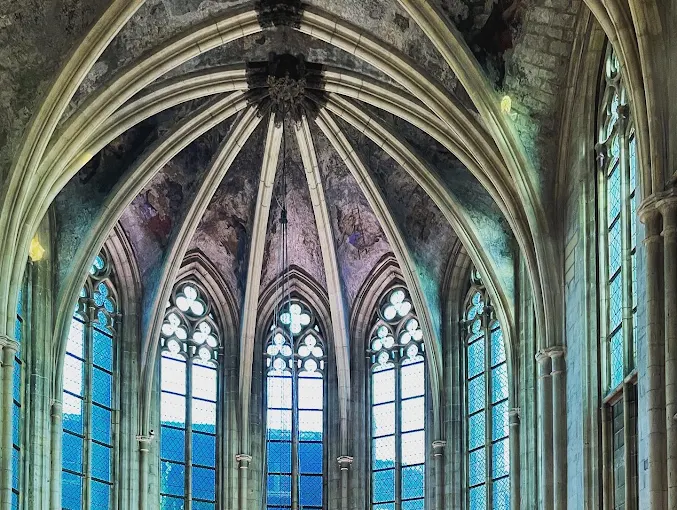
Architectural styles : Gothic architecture, Romanesque architecture
Architectural Styles and Hybrid Design
The Basilica of Saint Servatius is a remarkable blend of architectural styles, combining Romanesque, Gothic, and Baroque elements. The church is widely regarded as one of the most significant religious buildings in the former Prince-Bishopric of Liège, especially for its role in the development of Romanesque architecture in the Meuse and Rhine valleys. The exterior and interior of the church demonstrate a rich architectural history, with the East choir and Westwork being particularly influential in the evolution of Romanesque design. The exterior of the Basilica showcases a mixture of Romanesque solidity and Gothic intricacy, with the massive Westwork, towers, and the South portal forming key elements of its exterior. The Westwork, which contains several levels and towers, is a striking example of Romanesque design, with sturdy walls and narrow windows designed to evoke strength and permanence. The Romanesque East choir, with its carefully structured apse and dwarf gallery, is another important feature, influencing later developments of church architecture throughout the region.
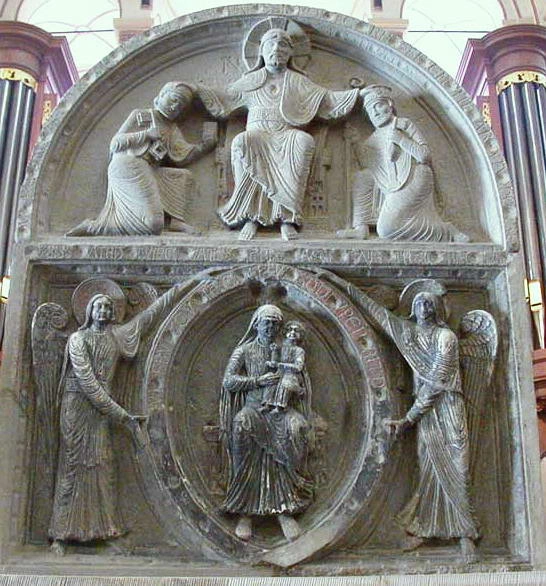
The Westwork: A Romanesque Masterpiece
The Westwork of the Basilica is one of the most distinctive and influential features of its architecture. This grand façade includes elaborate sculptural decorations and serves as a symbol of the church’s connection to both religious and imperial power. The Westwork features a series of intricately carved capitals depicting scenes drawn from Christian texts, such as Saint Augustine’s De Civitate Dei and various bestiaries. The themes include botanical motifs, animals, humans struggling with animals, and figures engaged in everyday activities. These carvings not only represent the artistic trends of the period but also reflect the intellectual and spiritual culture of the canons who commissioned them. Above the columns of the Westwork is a sculpted Romanesque choir screen, or double relief, that captures scenes of great theological significance. The lower part depicts the Virgin and Child, with angels holding the mandorla, while the upper part shows Christ giving the keys of Heaven to Saint Peter and Saint Servatius. This sculptural work is an excellent example of how Romanesque art integrated spiritual and royal imagery, emphasizing the church’s role as a beacon of divine and earthly authority.
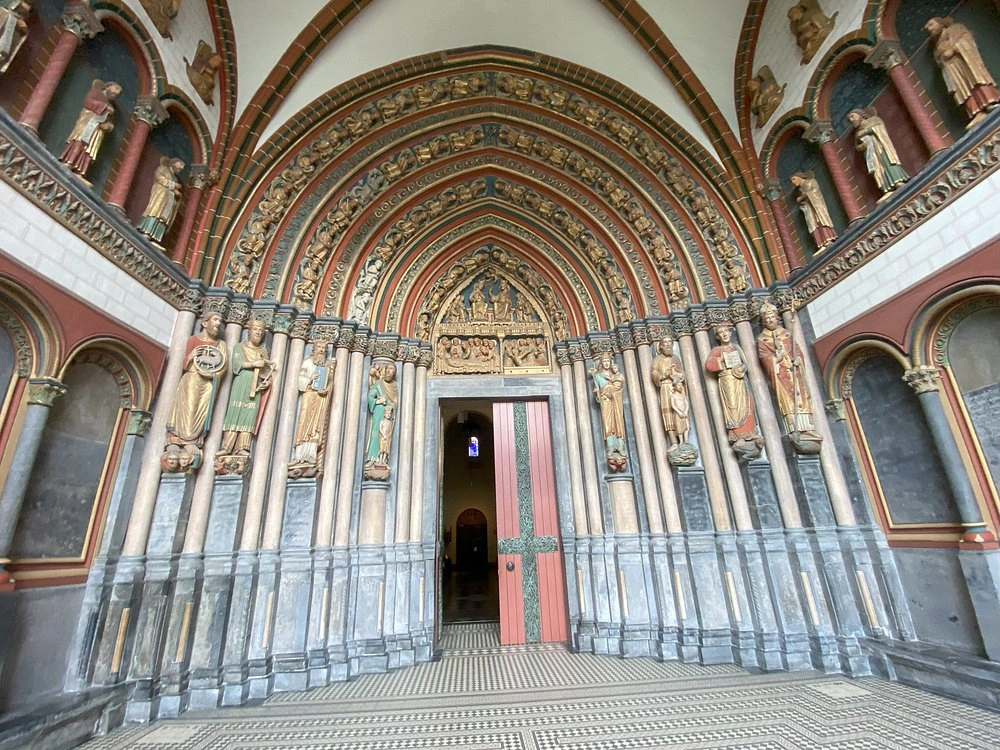
South Portal and Transition to Gothic Art
The South portal, or Bergportaal, is one of the most iconic features of the Basilica’s architecture. This portal is a masterpiece of sculptural art, marking the transition from late Romanesque to early Gothic styles. The tympanum and inner archivolts of the portal, created around 1180, retain Romanesque elements, with their deeply carved reliefs and symbolic motifs. The rest of the portal, however, can be considered Gothic in style, dating from around 1215. The evolution of styles reflected here captures the dynamic shift in artistic movements during the period, making it a key element for art historians studying the transition from Romanesque to Gothic architecture.
Interior: Romanesque Sculptures and Ceiling Paintings
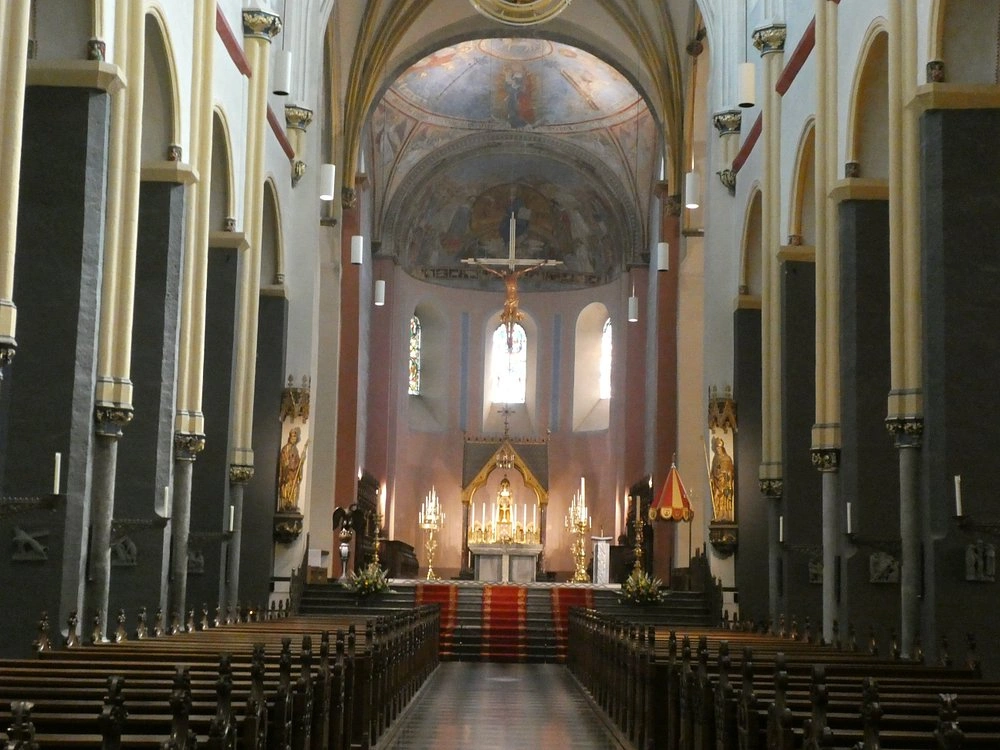
Inside the Basilica, the architectural grandeur continues with a series of striking Romanesque sculptures and ceiling paintings that embellish both the nave and the choir. The capitals of the Westwork, with their 34 detailed carvings, are particularly noteworthy. These capitals depict a wide array of scenes from theological texts, animals, and human struggles, creating a vivid narrative of Christian doctrine and medieval life. The Westwork’s vaulted ceilings, which are a characteristic feature of Romanesque churches, provide the perfect setting for these intricate sculptures, reinforcing the connection between architecture and decoration. The ceiling of the choir features remnants of early ceiling paintings that depict the visions of Zechariah, possibly the only surviving works from a group of Maastricht and Cologne-based painters who received high praise from medieval poets such as Wolfram von Eschenbach. These paintings, which once adorned the vaults of the choir, offer a glimpse into the rich visual culture of the Middle Ages and demonstrate the significance of the Basilica as both a religious and artistic center.
The East Choir and Dwarf Gallery
The East choir, with its apse and dwarf gallery, is another architectural gem of the Basilica. This part of the church is particularly significant for its architectural influence in the Romanesque period. The elegant yet sturdy design of the East choir demonstrates the careful consideration of both structural integrity and aesthetic beauty that defined the church’s construction. The apse’s semi-circular form, combined with the small, arcaded dwarf gallery, exemplifies Romanesque architectural practices, with the gallery providing a distinctive visual break in the flow of the structure.
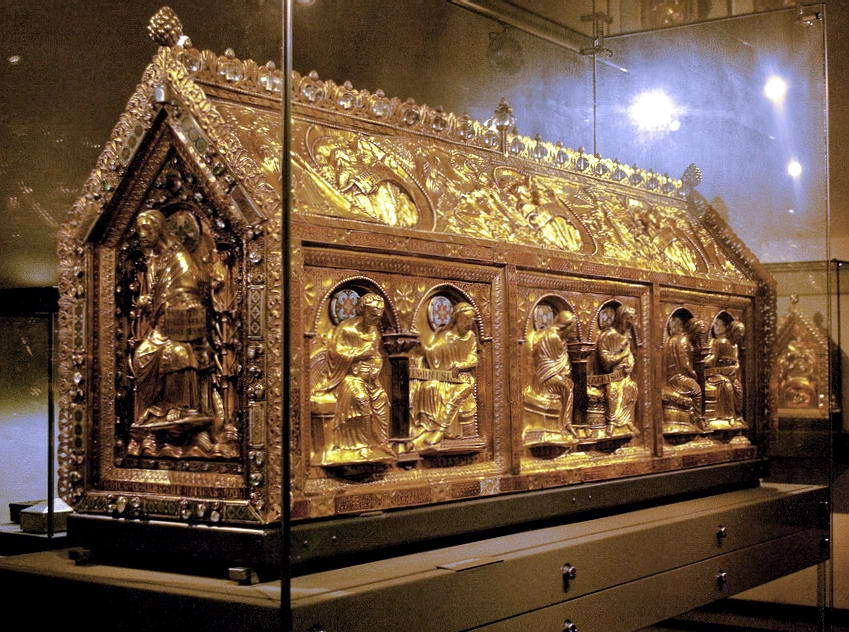
Treasury: A Wealth of Sacred Artifacts
In addition to its architectural and sculptural treasures, the Basilica of Saint Servatius houses an impressive collection of religious artifacts in its Treasury. Since the 9th century, the church has accumulated many invaluable items, most of which are now preserved in the Treasury. Among these treasures are the Reliquary Shrine and Reliquary Bust of Saint Servatius, as well as several other important liturgical vessels and relics such as the Key, Cup, Crozier, and Pectoral Cross of Saint Servatius. The Treasury also boasts medieval ivories, textiles, and other objects of artistic and religious value. The Reliquary Chest (Noodkist) from the 12th century and the Ivory Chest from the 11th century are notable examples of medieval craftsmanship. The Key of Saint Servatius, dating from the 9th century, symbolizes the church’s authority and connection to the saint, while the Portrait Bust of Saint Servatius from the 14th/16th century provides a tangible link to the historical figure. The extensive collection of relics and sacred objects housed in the Treasury underscores the Basilica’s significance as both a spiritual center and a repository of sacred art, with each piece offering insight into the religious and artistic history of the region.
Feast Day
Feast Day : 13 May
The feast day of Saint Servatius, the patron saint of the Basilica of Saint Servatius in Maastricht, is celebrated on May 13. This date marks the feast of his death and his significance as a missionary and bishop. The Basilica, which houses his relics, is an important pilgrimage site, especially during this time.
Church Mass Timing
Monday to Friday : 6:45 AM , 9:00 AM
Saturday : 09:00 AM
Sunday : 10:00 AM , 6:00 PM
Church Opening Time:
Monday to Saturday : 10:00 am – 5:00 pm
Sunday : 11:30 am – 5:00 pm
Contact Info
Address : Basilica of Saint Servatius
Keizer Karelplein 3, 6211 TC Maastricht, Netherlands
Phone : +31 43 321 2082
Accommodations
Connectivities
Airway
Basilica of Saint Servatius, Maastricht, Netherlands, to Maastricht Aachen Airport,, distance between 17 min (16.6 km) via A2.
Railway
Basilica of Saint Servatius, Maastricht, Netherlands, to Maastricht (NL) Stationsplein, distance between 28 min (26.0 km) via A2.

